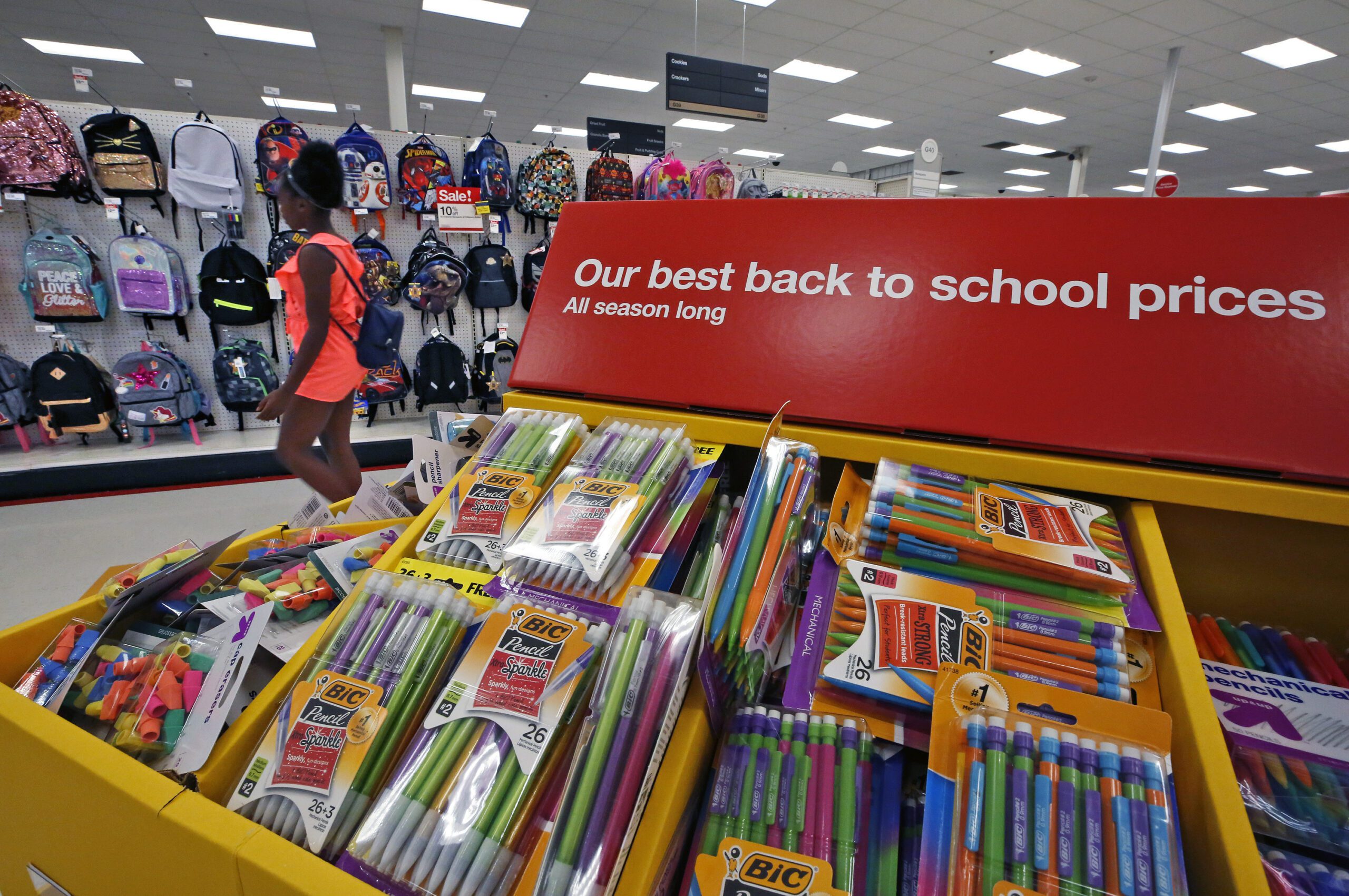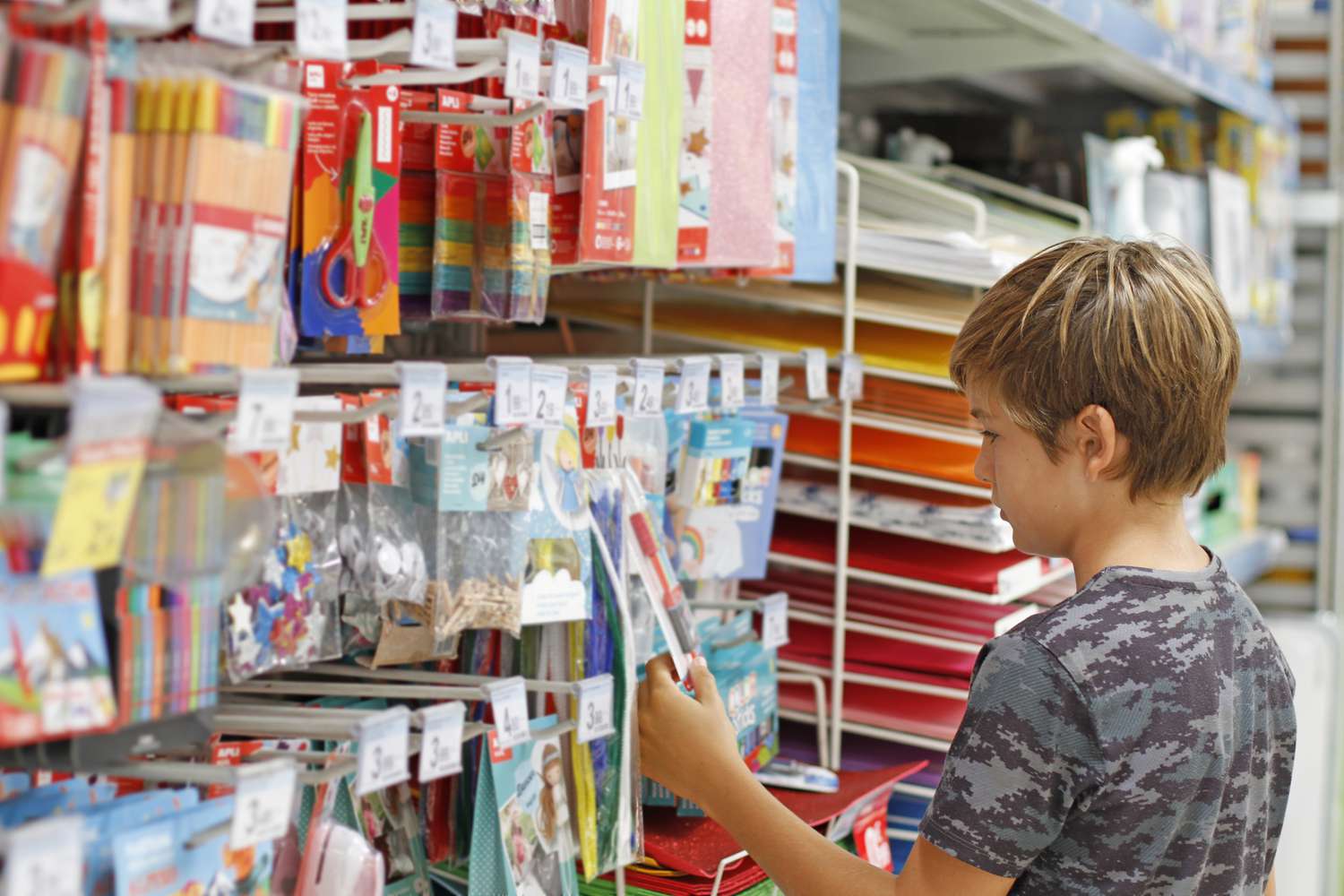Top Back to School Shopping Tips: Save & Succeed
Looking for smart back to school shopping tips to save money and time?
You're not alone. With Canadian families spending an average of $800-$1,200 per child on back-to-school essentials, finding the best back to school deals and strategies is crucial for budget-conscious parents. The good news is that with proper planning and smart shopping techniques, you can significantly reduce costs while ensuring your child has everything they need.
Back to school shopping can be a daunting task. With so many items to buy, it's easy to feel overwhelmed. But with the right approach, it can be a breeze.
Planning ahead is key. By starting early, you can avoid the last-minute rush and find the best back to school deals.
Creating a detailed shopping list helps you stay focused and avoid unnecessary purchases. It ensures you get everything your child needs for the school year.
Setting a budget is crucial. It helps manage expenses and prevents overspending. With these essential back to school shopping tips, you can save money and time while preparing for a successful school year.
Start Early and Get Organized
Starting your back to school shopping early can make all the difference. Early shopping allows you to capitalize on early bird sales and avoid crowded stores. It can also help you spread out expenses over a few months.
Organization is key when preparing for back to school. Begin by checking your child's specific school list for required items. Having a master list ensures you won't miss anything crucial.
Here are some tips to stay organized:
- Use a digital planner to track ongoing sales and shopping dates.
- Keep receipts in one place for potential returns or exchanges.
- Maintain a list of items still needed and update it regularly.
Being organized from the beginning can make the shopping process less stressful. Keep a separate area at home to store all newly purchased items. This ensures everything is ready when school starts. With a little planning, you can start the school year smoothly and confidently.

Make a Smart Shopping List
Creating a smart shopping list is essential for effective back to school shopping. Begin by reviewing any lists provided by your child's school. Schools often have specific requirements which can vary significantly.
Next, evaluate what supplies you already have at home. Check for items leftover from last year that are still in good condition. This way, you avoid unnecessary purchases and save money.
Here's how to craft your list strategically:
- Separate needs from wants to prioritize essentials.
- Include everything from pencils to technology, like calculators.
- Remember to add extracurricular supplies, like art or sports gear.
Having a smart list keeps you focused and prevents impulse buys. It's easy to get distracted by flashy sales. With a precise list, you ensure that all necessary items are purchased without breaking the bank. Smart planning paves the way for a successful school year.
Set a Realistic Budget
Setting a budget for back to school shopping is crucial for managing expenses. Start by calculating how much you can realistically spend. Account for all items on your list, considering both essential and optional items.
Determine the average cost for each category of items, such as school supplies, clothing, and technology. This breakdown helps allocate your funds wisely. Keep in mind unforeseen expenses and pad your budget slightly to accommodate them.
Here's a simple strategy to keep your spending in check:
- Prioritize essential items first.
- Set spending limits for non-essential categories.
- Track your expenditures to avoid overspending.
A well-defined budget helps prevent financial stress and ensures that your shopping experience is smooth. By sticking to your budget, you can focus on getting the best back to school deals while maintaining financial balance.
Find the Best Back to School Deals
Finding great back to school deals requires smart planning and a little research. Begin by exploring online retailers for discounts and flash sales. Many stores offer significant savings leading up to the school year.
In-store shopping can also reveal exclusive offers. Walk through clearance sections and check end-of-season sales for potential clothing and shoe deals. Don't hesitate to ask store associates about upcoming promotions.
Consider these tips to maximize your savings:
- Sign up for newsletters to get alerts on sales.
- Check out loyalty programs for added discounts and perks.
Additionally, price comparison tools are invaluable. Websites and apps can help find the lowest prices across various platforms. This is particularly useful for tech items where costs can vary greatly.
Be sure to keep your eyes peeled for extra savings opportunities:
- Look for bundle deals on school supplies.
- Use cashback apps for added monetary returns on purchases.
By taking advantage of these strategies, you can effectively reduce your back to school shopping expenses.

Shop Strategically: Online, In-Store, and Secondhand
Shopping strategically can greatly stretch your back-to-school budget. Firstly, online shopping offers convenience and often better pricing. Websites frequently feature exclusive online deals that you won't find in physical stores. Take advantage of this by comparing prices and using promo codes for extra discounts.
In-store shopping still holds value, especially when you need to assess the quality of items firsthand. Local retailers might offer in-store only specials that are not advertised online. Additionally, shopping in-store allows you to inspect items and ensure their durability, which is crucial for school supplies.
Don't overlook secondhand options for items like clothing or electronics. Thrift stores and online marketplaces can offer gently used products at a fraction of the cost. This is an excellent way to find quality items without breaking the bank.
Here are a few strategic approaches:
- Mix online and in-store shopping to get the best of both worlds.
- Check secondhand options for unique finds.
By shopping both online and in-store, and considering secondhand items, you can snag both deals and quality.
Maximize Savings with Coupons, Discounts, and Rewards
Stretching your dollar further is always appealing during back-to-school season. One effective way is by utilizing coupons and discounts. Many retailers offer special back to school deals in the form of coupons, which can often be found both online and in flyers. These can significantly reduce your total spending.
Another way to save is by participating in reward programs. Many stores have loyalty programs that give you points for every purchase. These points can be redeemed for discounts on future purchases, saving you money over the course of the school year.
Furthermore, keep an eye out for sales linked to student discounts. Many brands provide special offers for students, which can apply to anything from supplies to clothing.
Consider these tips to maximize savings:
- Use online coupons found on sites like RetailMeNot.
- Join store loyalty programs for points and rewards.
- Look for student discounts when purchasing necessary items.
By employing these strategies, you can optimize savings while gathering all the essentials.
Prioritize Quality and Durability
When shopping for school supplies, it's tempting to choose the cheapest options. However, investing in quality and durable items can save you money in the long run. Items like backpacks, shoes, and electronic devices endure daily wear and tear, so it's wise to choose reputable brands that offer longevity.
Spending a bit more upfront might feel excessive, but the durability of these items often prevents costly mid-year replacements. Aim for purchases that can withstand a year or more of use. To ensure you make lasting choices, consider the following:
- Research product reviews for insights on longevity.
- Select sturdy materials like reinforced fabrics for backpacks.
- Opt for items with warranties for extra assurance.
By prioritizing quality, you enhance the longevity of your investments, benefiting your budget over time.
Involve Your Kids in the Process
Involving your kids in back-to-school shopping is a great way to teach them about budgeting and decision-making. When kids participate, they become more responsible for their supplies and appreciate the effort involved.
Consider these steps to engage them in the process:
- Discuss the budget and why it's important.
- Let them create a wish list with essential and non-essential items.
- Allow them to choose specific styles or colors.
By giving them a role, you empower them to make informed decisions. This involvement not only educates but also helps you understand their preferences, making the experience enjoyable for both of you.

Think Beyond Supplies: Clothing, Tech, and Extras
When preparing for the school year, think beyond basic supplies. Clothing is a significant part of back-to-school shopping. Kids grow fast, so focus on essential clothing needs. Look for sales during end-of-season clearances to get more for less.
Technology needs are also important. Schools often require devices like tablets or laptops. Check for student discounts and compare tech prices to find the best deals. Prioritize durable items that last the entire school year and beyond.
Extras such as sports gear or musical instruments might also be necessary. Planning for these can prevent last-minute scrambles. Consider the following:
- Evaluate extracurricular activity needs early.
- Research for quality sports equipment to ensure safety.
- Account for any tech accessories like chargers and cases.
Being mindful of these aspects ensures comprehensive preparation, helping your child have everything they need to succeed both in and out of the classroom.
Stay Flexible and Track Your Progress
Flexibility is crucial in back-to-school shopping. Needs and priorities can change over time. Monitor sales for sudden price drops or new deals. Adapt your shopping plan as necessary to take advantage of unexpected opportunities.
Keep a checklist to track what you've purchased and what's still needed. This ensures nothing essential is overlooked. Consider these strategies for staying on top of your progress:
- Update your checklist regularly for organization.
- Remain open to adjusting plans as needed.
- Stay informed about new deals through newsletters or alerts.
These steps will help you manage your shopping effectively and avoid last-minute stress.
Frequently Asked Questions About Back to School Shopping
When should I start back to school shopping in Canada?
Start back to school shopping in Canada by mid-July to take advantage of early sales and avoid the August rush. Many retailers begin their back-to-school promotions in July, offering better deals and fuller inventory. Starting early also allows you to spread expenses over several weeks and ensures popular items don't sell out.
How much should I budget for back to school shopping per child?
Canadian families typically spend $800-$1,200 per child on back-to-school expenses, including clothing, supplies, technology, and extracurricular gear. Elementary students may cost $600-$900, while high school students often require $1,000-$1,500 due to technology and specialized equipment needs. Create a detailed budget based on your child's specific grade and school requirements.
What are the best back to school deals in Canada?
The best back to school deals in Canada typically occur during tax-free weekends (varies by province), late July through mid-August sales, and post-back-to-school clearances in September. Major retailers like Walmart, Costco, and Canadian Tire offer competitive pricing, while online retailers often provide exclusive digital coupons and bundle deals.
Should I buy school supplies in bulk to save money?
Buying school supplies in bulk can save money for non-perishable items like pencils, pens, and paper, especially if you have multiple children or want to stock up for the year. However, avoid bulk purchases for items your child might outgrow or lose interest in, and check school policies as some teachers prefer specific brands or styles.
How can I find my child's school supply list?
School supply lists are typically available on your school's website, through the school office, or via parent portals by late June or early July. Some schools also partner with local retailers to provide pre-made supply packages. Contact your child's school directly if the list isn't readily available online, as requirements can vary significantly between grades and schools.
What back to school items should I prioritize for quality over price?
Prioritize quality for items that receive heavy daily use: backpacks, shoes, winter clothing, lunch boxes, and any required technology like calculators or tablets. These items need to last the entire school year and beyond. For consumable supplies like notebooks and pencils, budget-friendly options work well since they'll be used up regardless of quality.
Final Thoughts: Stress-Free Back to School Shopping
Approaching back-to-school shopping with a clear plan can reduce stress. Use these tips to make informed decisions, easing your preparation process. Staying organized and proactive allows you to handle this busy time with more confidence and less pressure.
Remember, the goal is to ensure your child is ready for school without financial strain. By prioritizing quality and necessity, you can find balance. Enjoy the experience by involving your kids, teaching them valuable life skills in the process.
With these back to school shopping tips, you can achieve a smooth, stress-free experience while maximizing savings. Start early, stick to your budget, and take advantage of the best back to school deals available. Your preparation now will set the foundation for a successful and organized school year ahead.
This post is also available in: Français (French)